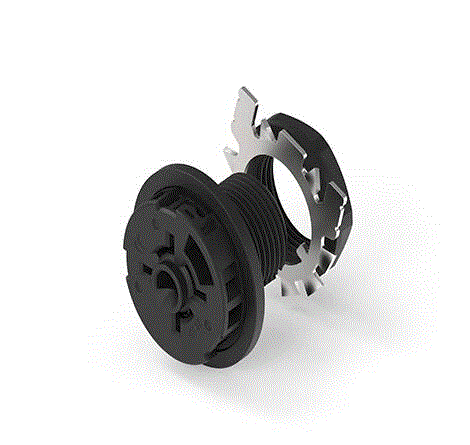Manufacturers
- Abracon
- Adam Tech
- Aerospace, Defense & Marine
- Agastat
- AIC
- AKM Semiconductor
- Alcoswitch
- Allegro
- Alps Electric
- Altera
- AMI Semiconductor
- AMP
- ams
- Analog Devices (ADI)
- Aptina Imaging
- Atmel
- Avago / Broadcom
- AVX
- Axicom
- Bccomponents
- Beyschlag
- BI Technologies
- Bourns Inc.
- Bowei Integrated Circuits
- Bridgelux
- Buchanan
- California Micro Devices
- Catalyst Semiconductor
- CGS
- Cirrus Logic
- Citizen Electronics
- CML Microcircuits
- Coiltronics
- Cooper Bussmann
- Corcom
- Core Logic
- Cree
- CSR PLC
- CTS
- Cypress Semiconductor
- Dale
- Data Image
- Deutsch
- Diodes Incorporated
- DOMINANT Opto Technologies
- E-T-A
- Eaton
- ECS
- Edison Opto
- Elcon
- EPCOS
- Epistar
- Epson
- Everlight Electronics
- Exar
- Fairchild Semiconductor
- FCI
- Freescale Semiconductor
- Fremont Micro Devices (FMD)
- Fujitsu Semiconductor
- Fulltech Electric
- General Semiconductor
- Harvatek
- Holsworthy
- Hsuan Mao Technology
- IDT
- Infineon Technologies
- Innolux
- International Rectifier (IR)
- Intersil
- IRC
- ISSI
- IXYS-IC
- Jing Cheng Electronical
- JL World
- Johanson Dielectrics
- Johanson Technology
- JRC / NJR
- JST
- KEC
- Kilovac
- Kingbright
- Kyocera Industrial Ceramics
- LEDiL
- Linear Technology / ADI
- Lite-On Technology
- Littelfuse
- Lumex
- Lumileds
- Luminary Micro
- Luminus Devices
- Macronix
- Maojwei / ZJPT
- Maxim Integrated
- MCC
- Mean Well Enterprises
- Microchip Technology
- Micron
- Microsemi
- Mini-Circuits
- Molex
- Murata Manufacturing
- Murata Power Solutions
- MWT
- National Semiconductor
- Nichicon
- Nippon Chemi-Con
- NJR / JRC
- NVE
- NXP Semiconductors
- OEG
- Omnivision
- ON Semiconductor
- Optek Technology
- Optrex
- OSRAM Opto Semiconductors
- OTAX
- Panasonic
- Peregrine(pSemi)
- Potter & Brumfield
- Power Integrations
- PowerStor
- Preci-Dip
- Prewell
- Products Unlimited
- Pulse Electronics
- PulseCore Semiconductor
- Qorvo
- Raychem
- Renesas Electronics
- RFMD
- Richtek Technology
- ROHM Semiconductor
- Rubycon
- Samsung Electro-Mechanics
- Samsung Semiconductor
- Schaffner
- Schrack
- Seiko Instruments, Inc. (SII)
- Semtech
- Sensata
- Seoul Semiconductor
- Sfernice
- Sharp Display
- Sharp Microelectronics
- Silicon Labs
- Siliconix
- Skyworks Solutions
- SoniCrest / JL World
- Spansion
- Sprague
- Stanley Electric
- STMicroelectronics
- Sunny Electronics
- Susumu (SSM)
- Taimag
- Taiyo Yuden
- TDK
- TDK-Lambda
- TE Connectivity
- Teccor
- Texas Instruments (TI)
- Thin Film
- Tianma Micro-electronics
- TOCOS
- TOKO
- Toshiba Electronic Components
- TT Electronics
- Tusonix
- TXC
- Tyntek
- Vishay
- Vishay Precision Group
- Vitramon
- Walsin Technology
- Weidmuller
- Welwyn
- Wickmann
- Winbond
- Xilinx
- Yageo
- Zetex Semiconductors
- ZJPT / Maojwei
News
Featured Product: LUMAWISE Endurance S Z10
2021-08-25 | Return LUMAWISE Endurance S Z10 connectors from TE Connectivity for adaptable voltage and increased control
LUMAWISE Endurance S Z10 connectors from TE Connectivity for adaptable voltage and increased controlNew Z10 lighting architecture meets updated technical requirements
TE Connectivity, a world leader in connectivity and sensors, is upgrading its LUMAWISE product portfolio to include Z10 architecture. Z10 uses a 0-10V analog control methodology, meaning it can be used with the more prevalent 0-10V dimmable drivers which have been increasing in popularity over the last few years. The analog Z10 opens a plethora of opportunities for use in new markets where low-voltage analogue compatible controls are needed.
“Z10 architecture enables a control device to be plugged in rather than permanently wired, which allows for easy upgrading and servicing. Additionally, Z10 technology provides a robust, reliable control platform for dimming and Dim-to-Off operations on outdoor and indoor lighting solutions,” said Jonathan Catchpole, TE Connectivity Systems Architect. “The increased optionality of this technology enables a wider range of application use, especially in North American markets where analog is typically used over digital signals.”
The new pluggable Z10 solution is a small form factor connector that provides greater flexibility in luminaire design. Enhanced ingress protection against water and dust and the ability to mount in any direction further differentiates the Endurance S design.
As the Design Lights Consortium (DLC) rolls out updated LUNA Technical Requirements to decrease light pollution, the ability to control lighting solutions via dimming is increasingly important. The Z10 architecture meets the demands of LUNA requirements by providing dimming controls and solutions. Especially in areas such as the United States, controllable analog architecture is the more heavily adopted standard due to its perceived reliability and economic benefits. TE Connectivity is pioneering the way for these compatible lighting solutions.
The move toward smarter cities and better energy management have forced manufacturers to examine ways to minimize the environmental footprint of lighting systems. Z10 architecture meets the demands of smart city applications by providing a way to reduce a municipality's energy usage and demand — paving the way for more responsible resource management.
Source: http://www.te.com/





